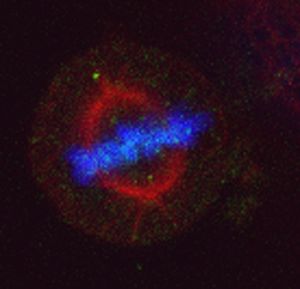A novel mechanism in human carcinogenesis identified Deregulation of HSP70 methylation leads to cancer

Heat shock protein 70 (HSP70 or HSP1A1) is a ubiquitous molecular chaperone that functions in a myriad of biological processes including modulation of polypeptide folding, protein degradation, translocation across membranes, and protein-protein interactions. This protein is post-translationally modified in various ways such as phosphorylation, ubiquitination and glycosylation, but the physiological significance of methylation has never been elucidated. Professor Ryuji Hamamoto and his research team at the University of Tokyo’s Institute of Medical Science report the identification of di-methylation of HSP70 at Lys-561 by the enzyme SETD1A. Enhanced HSP70 methylation was detected in various types of human cancer by immunohistochemical analysis although the methylation was barely detectable in corresponding non-neoplastic tissues. Interestingly, methylated HSP70 was predominantly localized in the nucleus of cancer cells whereas most of the HSP70 protein was located in the cytoplasm. Nuclear HSP70 directly interacts with aurora kinase B (AURKB) in a methylation-dependent manner and promotes AURKB activity in vitro and in vivo. The team also found a growth promoting effect of methylated HSP70 in cancer cells. These findings demonstrate a crucial role for HSP70 methylation in human carcinogenesis. These findings were published in Nature Communications on 18 September 2012.
Press release (Japanese)Paper
Hyun-Soo Cho, Tadahiro Shimazu, Gouji Toyokawa, Yataro Daigo, Yoshihiko Maehara, Shinya Hayami, Akihiro Ito, Ken Masuda, Noriko Ikawa, Helen I. Field, Eiju Tsuchiya, Shin-ichi Ohnuma, Bruce A.J. Ponder, Minoru Yoshida, Yusuke Nakamura, Ryuji Hamamoto,
“Enhanced HSP70 lysine methylation promotes proliferation of cancer cells through activation of aurora kinase B”,
Nature Communications Online Edition: 2012/09/18, doi: 10.1038/ncomms2074.
Article link








